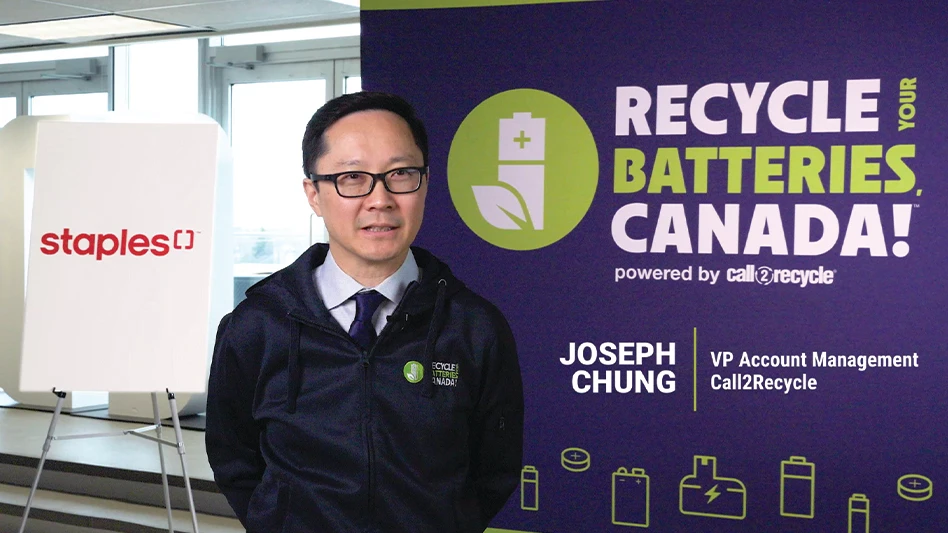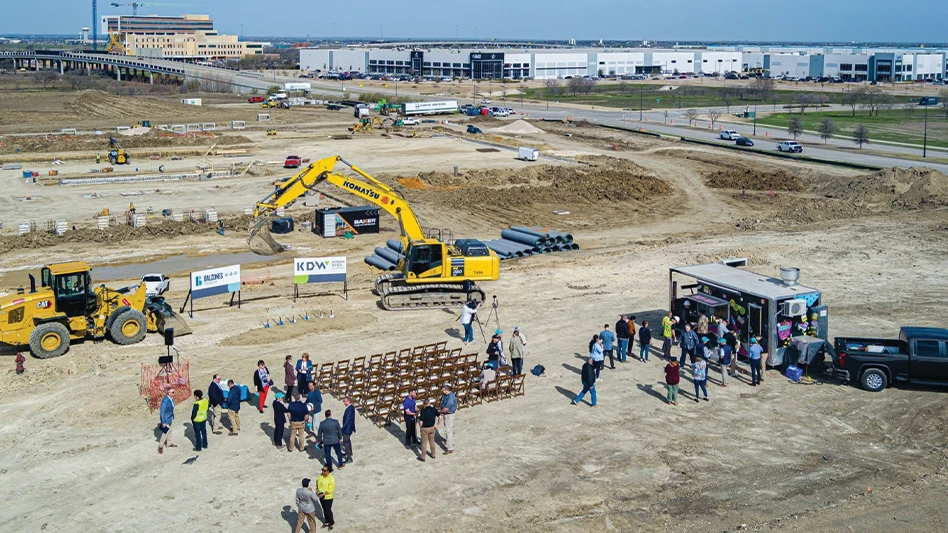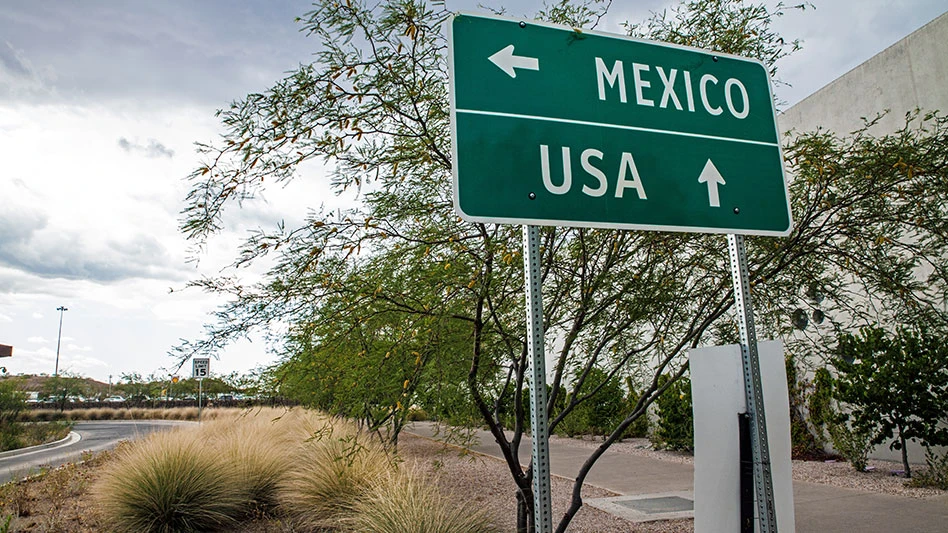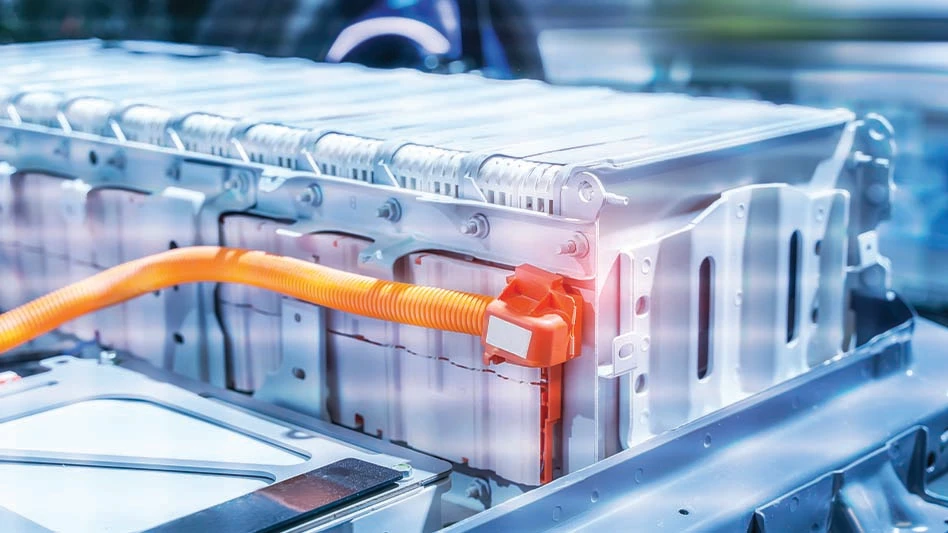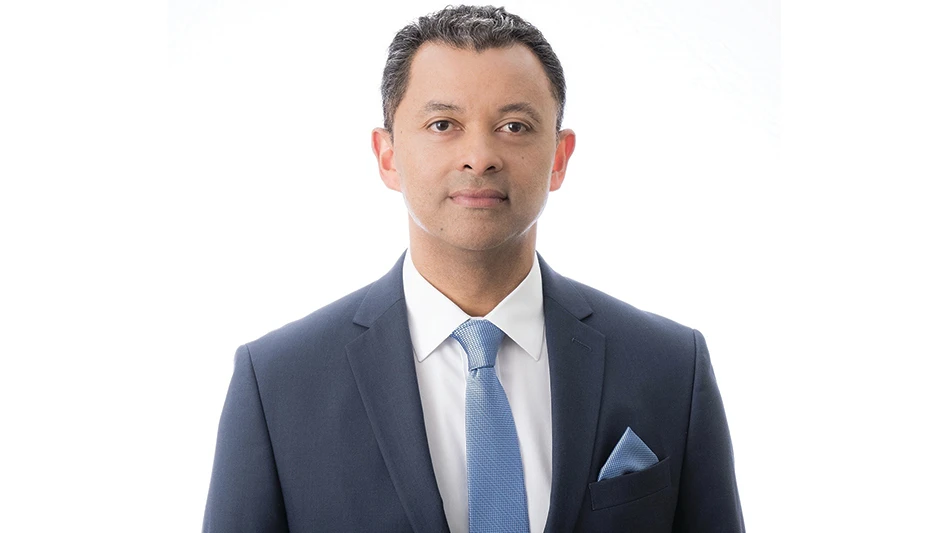
Waste Management
Even in the midst of a pandemic, material recovery facilities (MRFs) such as those operated by Houston-based Waste Management continued to push forward making new investments, upgrading and constructing new facilities. By the end of this year, Waste Management will have completed construction on three new MRFs—one in Chicago, one in Salt Lake City and one in Raleigh, North Carolina.
Brent Bell, vice president of recycling at Waste Management and president of Waste Management Recycle America, says the company traditionally retrofits, constructs or upgrades at least two to three of its MRFs every year, he notes that these three facilities were larger in size and processing capacity than some of the company’s other MRFs.
Recycling Today followed up with Bell to learn more about these three investments.
Recycling Today (RT): Why did Waste Management decide to construct new MRFs in Chicago, Raleigh and Salt Lake City this year?
Brent Bell (BB): We normally try to [upgrade] two or three facilities every year. It just so happens that these ones are larger [than some of our MRFs], especially the Chicago one. But like Salt Lake City and Raleigh, those were all markets we were in currently and our existing facilities [in those locations] were older and were kind of maxed out in what they could process in terms of volumes. We need to invest in new facilities, better technology that can handle more volumes than our existing facilities did. So, on those situations, we actually moved into a brand new building in Raleigh. Raleigh is one that technically won’t open until November. But it will be open this year. Salt Lake City opened up a few months ago. And in Chicago, we opened that earlier this year as well.

RT: What are some unique features of the three new MRFs?
BB: So, Salt Lake City is a 50,000-square-foot facility. It’s located next to a Waste Management transfer station. It will be capable of doing 6,000 to 7,000 tons per month once it’s fully running, and we’re expecting that to ramp up to those volumes toward the end of the year. In Salt Lake City, we had an older [MRF] that wasn’t very automated. So, we expanded capacity and moved to a newer facility. We do see a lot of growth in the Salt Lake City market.
Raleigh is slightly smaller. It’s 40,000 square feet. That’s a brand new building next to a Waste Management collection company. We actually own the land and we're building it brand new on there. That one will be about 5,000 to 6,000 tons per month. In Raleigh, we had an older facility. It was leased, and that landlord wanted to redevelop it into another shopping center. So, we thought that would be a great opportunity to upgrade capacity and expand the MRF so we can handle more volume in the future there as well. These situations were a little unique where we said we’d open up new facilities in another part of town so that we can have more capacity, perhaps larger MRFs.
Then, to put that in perspective, this makes the others seem small, Chicago is 150,000 square feet. We own that building. We purchased that building two years ago when we first started this project. Chicago is expected to do well over 20,000 tons per month. The story of Chicago is interesting. We had two facilities in the Chicago area—one on the south side and one on the north side. And about probably 2017 or 2018, we pitched the idea that it would be nice for us to have a research and development type facility that we could try new equipment and do things with a … essentially try out stuff and see how it works. As you can imagine, we get a lot of equipment manufacturers that say, “Oh, look at this. This looks well in our lab.” And we’re like, “Yeah … how would that work in a real environment with 15 percent residue rates?”
So, Waste Management was on board with doing an investment in an R&D type facility, and we really weren’t going to make it very publicly known that we had it just because it would just be for testing and internal purposes. And then, unfortunately, we had a fire in our south Chicago facility in the middle of us constructing this one. So, then we said, “OK, we have to make a decision: Do you rebuild the south Chicago MRF or do you just say, ‘Let’s accelerate this one so it can be a recycling facility that will hit on the volumes?’” We made that decision in 2019. Then in 2020 ramped up to say, “This is a facility we’re going to be dependent on and process tons for our customers in that area. So, it turned into an R&D facility and was good timing because it became one of our latest technologies, heavy automation. It had intelligent sorting.
So, on this facility, at some point, we don’t give tours of it, but you can go there and see certain parts of it, like a control room with flat-screen TVs in it—red and green statuses showing up, so if loader is running hot, it goes off or if a piece of material isn’t where it should be, it goes off. We call it an intelligent sorting facility. In the control room, it’s essentially some of our best operators and technology experts in the country sitting down and saying, “What do we want this control room to operate and how are we going to make action on it?” That was a big, one of the big takeaways. We can monitor 1,000 metrics, but which ones will we actually take action on? And that’s what we narrowed it down to. It’s fine to monitor all this stuff, but we show on the screens in there is what operators will take action on and if they see something indicating a problem—whether it’s maintenance, quality or operational.
Now, it’s not completely AI (artificial intelligence)--there is human interaction involved to navigate through that--but that kind of is the concept now. That’s what makes Chicago really exciting, as well as the equipment in there is great. At the end of the day, you get a tip floor there that looks just like residential single-stream, our job is to make that the highest quality [material] possible and process that efficiently as possible. So that’s where this technology and behind-the-scenes control room is really interesting.
RT: Were there any additional obstacles that Waste Management faced with starting three new MRFs during the pandemic?
BB: Definitely. I would say all the way from equipment coming in and having some delays there. A lot of equipment does get manufactured overseas, so they had some export shipping issues that were a little bit slower than normal. With the installation crews, sometimes the installation crews come from Europe. There were some delays in terms of travel restrictions in certain situations. Also, we typically have grand opening events where we might have local municipality customers and media come out and look at that opening. That got deferred. So, it is a little bit unusual in terms of opening in a year like this where there are so many restrictions in place on where people can be and what people can do, but we definitely have been fairly successful on the openings of these facilities so far this year.
RT: What kind of technology did the company add to these three MRFs?
BB: So, Chicago is probably the one [of these three] that we’re the most secretive about if you will because that’s the largest one. In Salt Lake City, that’s got the most recent automation as well as Raleigh—heavy optical sorting, which really helps out on making a higher, pure-quality material. When I say, “new optical sorters,” they are a lot better than the older ones were in the past. So, there’s a lot of technology out there that’s been upgraded and refined. That’s what these facilities are seeing. It’s allowed for a lot more automation as well as making sure the quality of material not only can be changed but gets picked out with higher accuracy levels.
The one thing that we see is if you’re investing in a facility that you hope to last the next 10 years plus, we know that 10 years from now the commodity stream will most likely look much different than it does today.
I would also say there is a lot of technology in terms of communications that these systems spit off, whether it’s a baler, an optical sorter [or] conveyors. They all have electronic data that they can provide and that you can tap into. What we’re trying to do is create a control room for these facilities where you can tell it, “Hey, I want, for example, a temperature bearing measure on a conveyor.” If that exceeds—I’m making a number up here—220 F, then I want this light in the control room to turn red so that I am notified as an operator that I’ve got an issue. … We’ve been developing these behind-the-scenes ways to gather all the data to help us understand the quality, maintenance and operations and how we can make real-time decisions. In older plants, a motor would have burned up, and we’d have to go down for a couple of hours to replace a bearing. Here [with data] it’s more on the preventive maintenance side.
RT: What kind of data can equipment generate for MRFs today?
BB: It really is amazing with some of the equipment manufacturers today what you can get and gather. Anything that has some form of a camera-type system there—optical sorters are the best example—[offer data]. For example, we may have an optical sorter fire on plastics. But we also know that it’s gathering data on everything else that it’s not firing on. It’s keeping records of everything passing through. We’re able to look at that kind of stuff and see where the flow of material is coming from.
We have in Chicago what’s called a volumetric scanner that’s scanning to make sure we know we can tell what input that facility is getting. That’s one of our largest facilities that we’ve just built, and it’s probably one of the largest ones in North America at this point. It can achieve 66 tons per hour, and one of the things about it is that we’ve got to make sure it’s fed on a continuous basis. That volumetric scanner at the beginning, for example, would indicate to us, that we’re overfeeding it, underfeeding it or are just right. Those types of things are something that before, it would just be a plant manager or supervisor on the tip floor looking at how much material the loader is putting in the drum feeder. Now, we can precisely measure that out.
RT: Do any of the three new MRFs incorporate robotics? Why or why not?
BB: [We’re making sure that] anything we invest in can easily adapt and accept other commodities. With those three facilities, they don’t actually have robots today, but we do have robots in other facilities. You can program a robot to prioritize what it picks. We’re investing in [robotic technology] at what I would call our older MRFs just because robots are a good bridge to when you do a full-on investment to the extent we did in Chicago and Salt Lake City.
The way I try to explain robots is they are very helpful. We have about 10 of them today in a handful of different facilities. But robots really replace people. A lot of times in a MRF—if you think about the way a MRF is designed—outside of the presort, the only reason why people are needed is for quality control because a piece of equipment didn’t do what it was supposed to do. So, most folks in the recycling facility are just doing quality control. On the newer MRFs, with newer equipment, newer technology—you have more accurate optical scanners, magnets are stronger than before—your need for people and robots diminishes.
Get curated news on YOUR industry.
Enter your email to receive our newsletters.
Latest from Recycling Today
- Recycled steel price crosses $500 per ton threshold
- Smithers report looks at PCR plastic’s near-term prospects
- Plastics association quantifies US-EU trade dispute impacts
- Nucor expects slimmer profits in early 2025
- CP Group announces new senior vice president
- APR publishes Design Guide in French
- AmSty recorded first sales of PolyRenew Styrene in 2024
- PRE says EU’s plastic recycling industry at a breaking point
